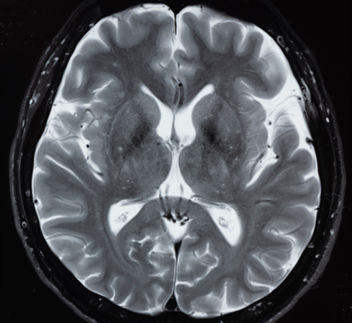Epilepsy: Treatment Overview
May 30, 2023Epilepsy affects millions of people across the globe and doesn't have a cure. It is important if you suffer from epilepsy that you find a treatment option that is best for you. We will break down different options for epilepsy treatment and how they can help.

The Inside Rx Blog
Get the Inside Scoop on tips & tricks that may help your family save on prescriptions!
Subscribe to stay up to date with the latest news and tips
Reviewed by the Office of Clinical Evaluation and Policy (OCEP), Evernorth
Epilepsy is a relatively common condition that can impact daily life in various ways. Affecting approximately 50 million people worldwide, epilepsy is a neurological disorder characterized by sudden, repeated seizures. Although there’s no cure for epilepsy, treatment options are available to help manage symptoms and treat or prevent seizures.
Read on to learn more about the available epilepsy treatment options.
Epilepsy Treatment Options
Epilepsy is a complex disorder that comprises a range of seizure types and triggers. Finding the most appropriate treatment plan is important for managing seizures and reducing the risk of other problems. With the right treatment strategies, such as medication and lifestyle changes, a person with epilepsy can improve the quality of their life.
Medications for Epilepsy
The main epilepsy treatment approach includes antiepileptic drugs (AEDs) to manage and prevent seizures. There are over 30 prescription AEDs available in the market, and they are typically administered as oral tablets or capsules. They work by balancing the electrical activity in the brain, which helps prevent or reduce the chances of a seizure.
The AES Clinical Guidelines recommend medications that are tailored to a patient's specific type of epilepsy, seizure severity, and personal factors, such as age and preexisting conditions. There is no one-size-fits-all approach, and what works for one person may not work for another.
Approximately 70% of people with epilepsy can successfully manage their seizures with the use of medication. However, some individuals may require a combination of medications or even different treatment options.
Common antiepileptic drugs used to treat epilepsy include:
- Carbamazepine
- Valproic acid
- Phenobarbital
- Phenytoin
- Lamotrigine
- Levetiracetam
- Oxcarbazepine
- Topiramate
- Gabapentin
- Pregabalin
Before prescribing an antiepileptic drug, healthcare professionals will consider different factors, such as drug interactions, potential side effects, and a person's overall condition. Some common side effects associated with AEDs include fatigue, dizziness, nausea, and mood changes. It’s important to discuss any medication concerns with a healthcare provider to get the most appropriate medication plan.
For women who are pregnant or considering pregnancy, special considerations may be necessary. Some epilepsy medications may pose a risk to the developing fetus, so it's essential to have a conversation with a healthcare provider when planning a family.
Other Epilepsy Treatments
In some cases, when medications alone are not effective in controlling seizures, additional treatment options might be explored. These alternative treatments may include:
- Vagus nerve stimulation (VNS): A device called a vagus nerve stimulator is implanted beneath the skin of the chest to help regulate electrical activity in the brain. This device sends electrical signals to the vagus nerve, which in turn helps control seizures.
- Epilepsy surgery: For some individuals with persistent, uncontrolled seizures, surgery might be a viable option. Several types of surgeries are available, but the option chosen often depends on the seizures' origin in the brain. Resective surgery, for example, involves the removal of the brain region responsible for seizures, which is usually one of the temporal lobes. Another minimally invasive surgical technique is thermal ablation, also known as laser interstitial thermal therapy, which uses heat to destroy seizure-inducing brain tissue.
- Lifestyle changes: In certain cases, adhering to specific diets, such as the ketogenic diet or the modified Atkins diet, may help manage seizures in conjunction with medication. Dietary therapies like the ketogenic diet may be beneficial in reducing seizure frequency. Other lifestyle changes may include getting adequate sleep, reducing stress, and avoiding alcohol and illicit drugs.
When considering epilepsy treatment, it’s important to consult a healthcare provider for the most effective treatment plan. A healthcare provider can help identify any necessary changes, address concerns, and recommend various options for people living with epilepsy.
Valproic Acid
$ 15.99Carbamazepine
$ 12.08Getting the Right Epilepsy Treatment
Epilepsy can be hard to live with, but treatment options can help reduce symptoms. Managing epilepsy is highly individualized, and the best treatment depends on different factors.
For additional resources and assistance, people with epilepsy can turn to organizations like the Epilepsy Foundation, which aims to connect individuals with their local community and provide support services. These organizations can also help patients find specialized doctors who can diagnose and treat seizures effectively.
Sources:



